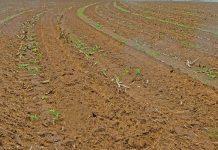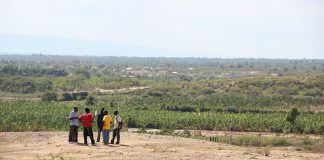
Photo: Flickr | United Nations
He told the BBC that droughts and flooding had become so common in some of the poorest regions globally that these regions had “zero harvests left”.
Latest estimates by the Global Environment Facility indicate that approximately 95% of the land around the world could become degraded by 2050, while UN estimates show that 40% of all land was already degraded.
READ Earthworms to the rescue on degraded sugar cane land
The Global Environment Facility is ‘a multilateral family of funds dedicated to confronting biodiversity loss, climate change, and pollution, and supporting land and ocean health’, according to the company’s website.
In parts of Africa, the Middle East and Latin America, land degradation has resulted in countries there becoming dependent on humanitarian aid.
If measures to reverse global land degradation were not instituted soon, so-called richer countries would also start to experience crop failure, Frick warned.
In addition to prolonged droughts interspersed with sudden, extreme episode of rainfall, land degradation is also the result of modern farming techniques that remove organic content from soil, according to UN scientists.
They added that climate change was resulting in extreme weather events becoming more frequent and intense.
According to Frick, in the East African country of Burundi, heavy rain and flooding over several months resulted in 10% of that country’s farmland suffering damage, “making it unusable for the upcoming harvest season”.
READ Switching to no-till? Restore degraded soil first!
According to Frick, in the East African country of Burundi, heavy rain and flooding over several months resulted in 10% of that country’s farmland suffering damage, “making it unusable for the upcoming harvest season.”
He also referred to a UN report released in March this year, which indicated that grain crops in the Darfur region of Sudan fell to 78% below the average for the previous five years as the country suffered droughts and civil war.
Earlier this year, flash flooding in Afghanistan also destroyed an estimated 24,000 ha of land already considered highly degraded by environmentalists.
Due to these extreme events and resultant soil degradation, which resulted in crop failures, global food supplies would come under pressure and migration from affected areas would increase, the report said.
Frick argued, however, that such a situation could be avoided if there was a decisive move towards more localized farming “that seeks to reinvigorate the land.”
He stressed that there was currently “an unhealthy dependence on crops such as wheat, maize, and rice, and the few nations that were large-scale exporters of these grains created food shortages that particularly affected the developing world when those nations’ harvests were interrupted.”
He suggested that to tackle hunger and land degradation simultaneously, the world’s poorest people should be incentivized to rejuvenate degraded land through regenerative practices, which should include farmers in those regions being eligible for funds raised through carbon credit schemes.












